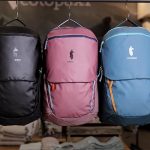Columbia Sportswear is taking steps to ensure future growth at the top end of the brand pyramid as it sees increasing competition from its own retail partners and their growing concentration on private label.
In a conversation with analysts on Friday to discuss the companys acquisition of outdoor apparel and equipment maker Mountain Hardwear, COLM CEO Tim Boyle explained that the price-points of the new subsidiary are about 20% more than Columbias upper-tier Titanium product, putting it squarely at the top of the pyramid with brands such as Patagonia and The North Face.
The deal, which includes $30 million in cash and $6 million of debt assumption, would make Mountain Hardwear a Columbia subsidiary. Its 65 employees would remain in California after the anticipated close of the deal on March 31, 2003.
COLM sees the opportunity to build a $100 million business with MH over the next five years, capitalizing on its current apparel and tent/sleeping bag business, while moving MH into the footwear and pack categories.
Mountain Hardwear had unaudited sales of $31.4 million in 2002, with $24.4 million coming from apparel and the balance attributed to equipment sales. Columbia sees an additional $30 million in sales for the last three quarters of 2003 under its umbrella, with a total of $37 million in sales expected for MH for the year.
With the pending Gart/TSA merger creating a private-label powerhouse in sporting goods and larger customers like Dicks Sporting Goods so dedicated to the private label business, its not surprising that COLM relishes the opportunity to secure a foothold in the specialty store business and away from the value-oriented positioning it has built over the years.
Mountain Hardwears biggest customers are retailers like REI, Galyans, Sierra Trading and Paragon.
The position they staked out in the middle of the brand pyramid is increasingly under attack from private label businesses that limit market share growth.
The impetus for this move can be seen in comments CEO Boyle made last month in a presentation, that while TNF, Timberland and Nike are “very daunting, high-quality competitors”, he intimated that the companys largest competitor is “really our own customers.”
Retailers are increasingly blurring the lines when it comes to brand recognition. For instance, ads for Gart’s Alpine Designs private label product began appearing recently in Ski and Skiing magazines.
The ads make Alpine Designs appear as “a branded-apparel company, not like a private brand for us,” Doug Morton, Gart’s president and chief executive, told analysts in November. Profit margins for the label’s fall offerings were running 15% to 20% higher than branded apparel, Morton said.
Alpine Designs was selling as fast or faster than comparable items from brands such as Columbia, “so we are very, very happy with the brand,” he said.
Mr. Boyle expects that MH will focus on product growth in the U.S. specialty market and improved sourcing to help grow the brand internationally. The company can help improve the “value” of the Mountain Hardwear brand, but Boyle does not see pricing approaching the Columbia business.
COLM sees a neutral EPS contribution in 2003, but expects accretive EPS contribution in 2004.
>>> The upper end of the scale is seen as a $2.5 billion opportunity, giving Columbia a lot of room to grow MH without driving prices lower
>>> This will now become a market share battle at the top as Columbia – and others – fight with their own customers in the middle















